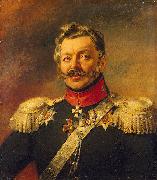Wholesale Oil Painting No Minimum |
|||||||||||
|
|
|||||||||||

|
|||||||||||
|
|
|
||||||||
George Dawe1781-1829 British George Dawe Locations English painter and writer. He was the son of the mezzotint engraver Philip Dawe who taught him engraving. He continued to concentrate on engraving when he entered the Royal Academy Schools, London, in 1796, producing portraits until 1802, when he turned to history painting. In 1803 he won a gold medal and the following year made his d?but at the Royal Academy, where he exhibited until 1818, often showing such anecdotal and literary works as Imogen Found in the Cave of Belarius (exh. RA 1809; London, Tate). He was elected an ARA in 1809 and an RA in 1814 and soon afterwards returned to portrait painting. In 1816 he painted a number of portraits of George IV daughter Princess Charlotte (e.g. London, N.P.G.), several of which were engraved. In 1817 he went to Brussels and was present at the review of the allied troops by Arthur Wellesley, 1st Duke of Wellington in Cambrai. Soon afterwards he was invited by Tsar Alexander I of Russia to paint the portraits of all the senior officers who had taken part in the Napoleonic Wars. He travelled to St Petersburg in 1819 where, over the next nine years, he painted nearly 400 portraits. These were placed in a specially built gallery (destr.) in the Winter Palace in St Petersburg. He returned briefly to England in 1828 before travelling to Berlin, where he painted the portraits of Ernest Augustus, Duke of Cumberland (1828; London, N.P.G.) and Frederick William III, King of Prussia (1828; untraced). From Berlin he moved to St Petersburg and then to Warsaw before being forced by illness to return to England, where he died shortly afterwards. His book The Life of George Morland with Remarks on his Works (1807) is both a lively account of his godfather dissipated lifestyle and a fairly critical appreciation of his work. |
||||||||
|
|
||||||||
Portrait of Paul Carl Ernst Wilhelm Philipp Graf von der Pahlen
Portrait of Paul Carl Ernst Wilhelm Philipp Graf von der Pahlen Painting ID:: 81357 |
Portrait of Paul Carl Ernst Wilhelm Philipp Graf von der Pahlen 1775-1834), russian Cavalry General.
Date 1821-1825
cjr Portrait of Paul Carl Ernst Wilhelm Philipp Graf von der Pahlen 1775-1834), russian Cavalry General. Date 1821-1825 cjr |
|||||||
|
|
||||||||
|
George Dawe 1781-1829 British George Dawe Locations English painter and writer. He was the son of the mezzotint engraver Philip Dawe who taught him engraving. He continued to concentrate on engraving when he entered the Royal Academy Schools, London, in 1796, producing portraits until 1802, when he turned to history painting. In 1803 he won a gold medal and the following year made his d?but at the Royal Academy, where he exhibited until 1818, often showing such anecdotal and literary works as Imogen Found in the Cave of Belarius (exh. RA 1809; London, Tate). He was elected an ARA in 1809 and an RA in 1814 and soon afterwards returned to portrait painting. In 1816 he painted a number of portraits of George IV daughter Princess Charlotte (e.g. London, N.P.G.), several of which were engraved. In 1817 he went to Brussels and was present at the review of the allied troops by Arthur Wellesley, 1st Duke of Wellington in Cambrai. Soon afterwards he was invited by Tsar Alexander I of Russia to paint the portraits of all the senior officers who had taken part in the Napoleonic Wars. He travelled to St Petersburg in 1819 where, over the next nine years, he painted nearly 400 portraits. These were placed in a specially built gallery (destr.) in the Winter Palace in St Petersburg. He returned briefly to England in 1828 before travelling to Berlin, where he painted the portraits of Ernest Augustus, Duke of Cumberland (1828; London, N.P.G.) and Frederick William III, King of Prussia (1828; untraced). From Berlin he moved to St Petersburg and then to Warsaw before being forced by illness to return to England, where he died shortly afterwards. His book The Life of George Morland with Remarks on his Works (1807) is both a lively account of his godfather dissipated lifestyle and a fairly critical appreciation of his work. Portrait of Paul Carl Ernst Wilhelm Philipp Graf von der Pahlen Date 1821-1825 cyf |
||||||||
|
|
||||||||
|
Prev Next
|
||||||||
|
|
||||||||
|
Related Paintings to George Dawe :. |
||||||||
|
|
||||||||
|
CONTACT US |

